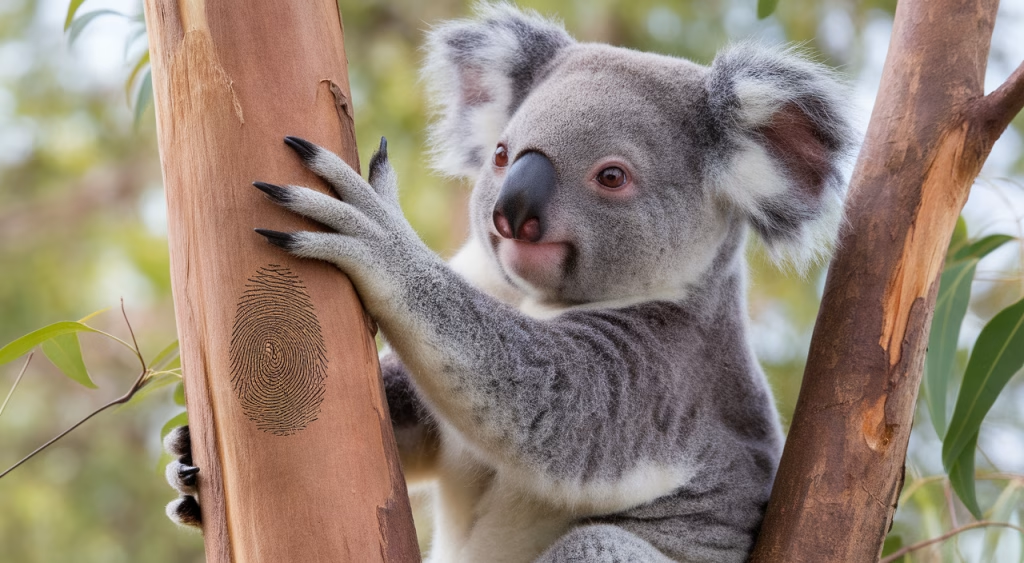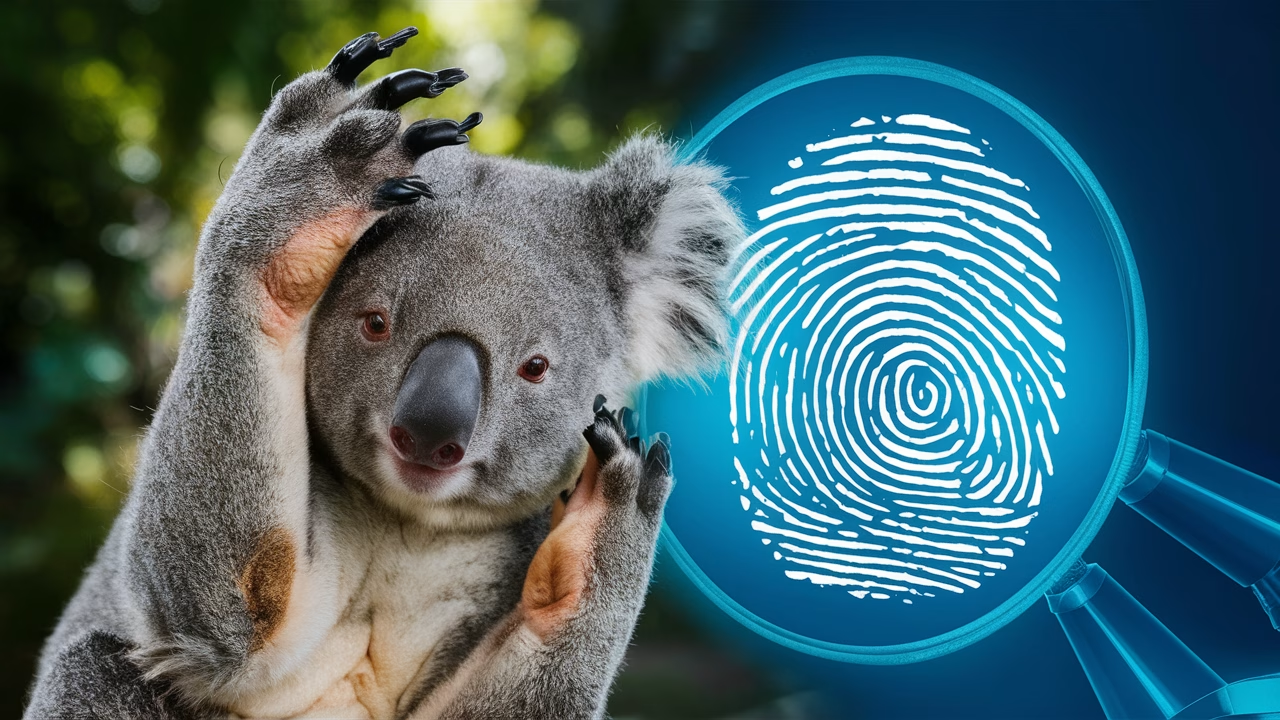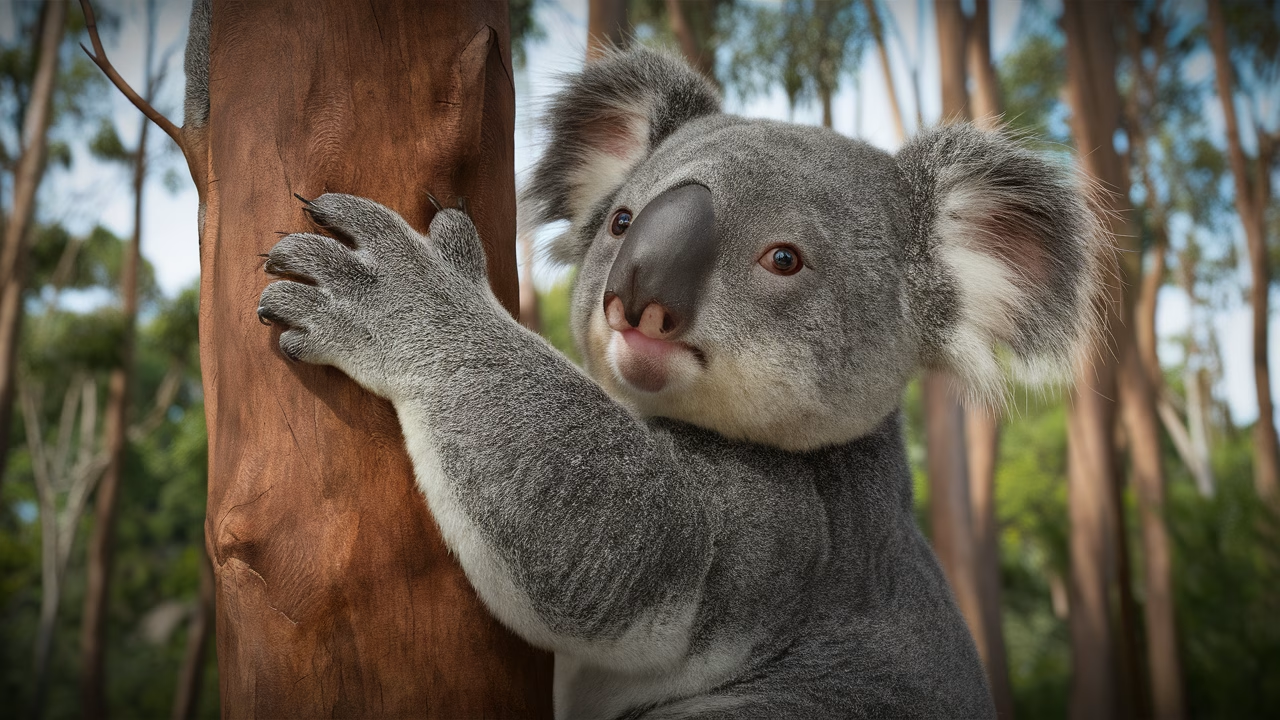Are koala fingerprints really indistinguishable from humans?
Yes. Koala fingerprints are so remarkably similar to human fingerprints that even forensic investigators under a microscope can’t easily tell them apart. This uncanny resemblance has puzzled biologists and forensic experts alike, leading to fascinating questions about evolution, mistaken identity at crime scenes, and the biological roles of fingerprints in different species.
TL;DR: Koalas and Human Fingerprints – What You Need to Know
- Koala fingerprints are virtually identical to those of humans, often fooling forensic experts.
- This similarity can potentially introduce confusion in crime scene investigations.
- Like humans, koalas use their fingerprints for fine motor tasks like gripping eucalyptus leaves.
- The study of koala prints offers surprising insights into evolutionary biology and wildlife forensics.
- Some cases have mistaken or flagged animal prints during forensic analysis, though rare.
The Unique Similarities Between Koala and Human Fingerprints
When you examine koala fingerprints under a microscope, the truth becomes startling: these arboreal marsupials possess loops, whorls, and ridges that mirror human fingerprint patterns almost perfectly. This remarkable similarity between koalas and humans isn’t just a biological curiosity—it’s a testament to evolution’s clever solutions.
Why would koalas evolve such intricate fingerprints? Like humans, koalas rely heavily on fine touch and grip. Grasping delicate eucalyptus leaves and navigating rough tree bark requires exceptional dexterity, and their fingerprints enhance tactile sensitivity just as ours do.
What makes koalas truly unique among marsupials is that most others—from kangaroos to wombats—either lack fingerprints entirely or have vastly simpler pads. Only koalas (and to a lesser degree, some opossums) exhibit these detailed fingerprint patterns that so closely resemble human ones. We’re witnessing deep evolutionary parallels between two seemingly unrelated mammals.
How Koala Fingerprints Confuse Crime Scene Investigations
Here’s where the story takes an unexpected turn: koala fingerprints have actually confused real crime scene investigations, creating challenges for forensic investigators.
This rarely-reported but documented issue has put forensic experts on high alert. In Australia, where humans and koalas share overlapping habitats, there have been verified cases where mysterious prints at crime scenes baffled investigators—until wildlife biologists identified them as koala prints, not human ones.
These incidents underscore a crucial principle in forensic science: environmental context matters enormously. While human fingerprints remain vital evidence in criminal cases, investigators must consider that when crime scenes occur near wildlife habitats, animal prints can create false leads—especially when koala fingerprints look virtually identical to human ones.
Though no cases have been wrongly prosecuted due to koala prints, forensic professionals now emphasize the importance of comprehensive scene analysis that accounts for local wildlife, particularly in areas where koalas are present.
Scientific Explanations for the Similarity
From a scientific perspective, how do koalas and humans—species separated by millions of years of evolution—develop nearly identical fingerprints?
The answer lies in convergent evolution, where unrelated species independently develop similar traits to solve comparable survival challenges. Just as dolphins and sharks evolved streamlined bodies for efficient swimming, koalas and humans developed ridged fingertips for enhanced grip and touch sensitivity.
Fingerprints provide crucial friction and tactile feedback—essential for koalas navigating treetops and grasping leaves, and for humans manipulating tools and objects. Over millennia, natural selection favored individuals in both species whose ridged fingertips improved their survival and reproductive success.
| Trait | Humans | Koalas |
|---|---|---|
| Fingerprint type | Loops, whorls, arches | Loops, whorls (arches rare) |
| Function | Touch sensitivity, grip | Grip on branches and leaves |
| Tactile enhancement | Yes | Yes |
Significance of Koala Fingerprints in Wildlife Forensics
Beyond human crime scene investigations, koala fingerprints play an increasingly important role in wildlife forensics—a specialized field that combats environmental crimes and protects endangered species.
Wildlife forensics investigators now use fingerprint analysis to solve cases involving illegal koala trafficking, poaching, and unauthorized captivity. When authorities recover koalas from suspected wildlife traffickers, distinctive fingerprint markers can establish individual identity, prove prior human contact, and help build legal cases against perpetrators.
Australia leads this innovative field, combining advanced forensic techniques with conservation biology. Investigators use fingerprint analysis alongside DNA testing and digital tracking to protect vulnerable marsupial populations from exploitation.
As these forensic tools become more sophisticated, we can expect koala fingerprints to serve justice rather than confuse it—helping prosecutors build stronger cases against wildlife criminals while protecting these iconic marsupials.
What the Koala-Human Fingerprint Connection Reveals About Evolution
The striking similarity between koala fingerprints and human fingerprints offers profound insights into evolution’s ingenious solutions. When you compare your fingertips to a koala’s paw, you’re witnessing convergent evolution in action—nature’s tendency to develop similar solutions for similar challenges.
This connection challenges our assumptions about human uniqueness while highlighting the remarkable adaptations that help species survive. For humans, fingerprints aided tool-making and precise manipulation. For koalas, they enabled navigation through eucalyptus canopies and consumption of toxic leaves that few other animals can digest.
Whether you’re a student of biology, wildlife enthusiast, or simply curious about nature’s mysteries, the koala-human fingerprint connection offers a humbling reminder: we share our planet with creatures whose biology overlaps with ours in surprisingly profound ways. Next time you touch something with your fingertips, remember that somewhere in Australia’s eucalyptus forests, a koala may be doing the same—with prints remarkably similar to yours.
Frequently Asked Questions (FAQ)
Are koala fingerprints indistinguishable from humans?
Yes, under magnification, koala fingerprints are so similar to those of humans that they can be nearly impossible to differentiate without advanced forensic tools.
Could a koala fingerprint be mistaken for a human in a crime scene?
Hypothetically yes, though rare. In regions where koalas roam near humans, prints at a crime scene could raise false leads if contextual cues aren’t analyzed.
Why do koalas need fingerprints?
Fingerprints in koalas increase friction and tactile sensitivity—essential for climbing trees and grasping thin eucalyptus leaves precisely.
What causes this similarity between koala and human fingerprints?
It’s due to convergent evolution—both species independently developed ridged skin as a practical adaptation to handling objects and improving touch.
Has fingerprint science been used in wildlife conservation?
Yes, wildlife forensics occasionally uses fingerprints in illegal pet trade cases to identify or protect animals like koalas.
Are there other animals with fingerprints like humans?
Only a few. Aside from koalas, primates like chimpanzees and gorillas also have similar fingerprint structures.
Do all koalas have identical fingerprints?
No, like humans, each koala has a unique fingerprint—making them valuable for individual identification in wildlife studies.





